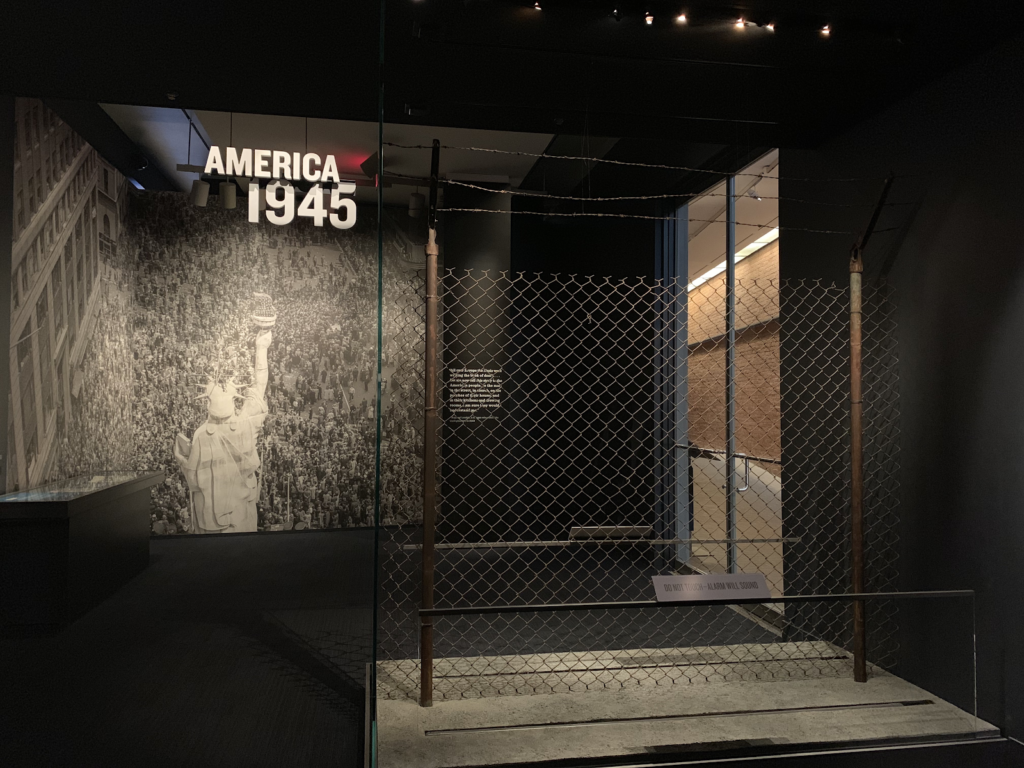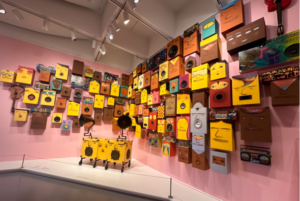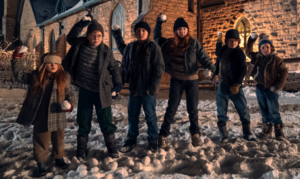The United States Holocaust Memorial Museum: Americans and the Holocaust

By Julianna Guthrie
The United States Holocaust Memorial Museum is now featuring an exhibit in honor of its twenty-fifth anniversary called “Americans and the Holocaust,” which is scheduled to remain open through 2021.
This walk-through exhibit takes visitors through the history of America and its connections with World War II from the year 1938. The first thing that visitors are faced with in the exhibit is a short film that puts into perspective the post-World War I crisis in America. The story of America and the Second World war is divided into sections dealing with America in the age of the rise of Nazism, the refugee crisis, the attack on Pearl Harbor, Hollywood and the war, America at War, and America 1945.
Incorporated into the exhibit are various television screens where you can watch newsreels and films of the time. There are also interactive touch screens where you can look through documents from the war-time era. The most heart-wrenching of these screens is found in the Refugee crisis section where you can scroll through the biographies of those desperately trying to find sanctuary in America— some achieved this, others were not so lucky. All of these features are placed beside various artifacts of the time such as letters, official documents, posters, and personal belongings.
At every point of the exhibit, visitors can find polling stands. These polls were given to average Americans in real-time during this period. On the front lies the question asked to respondents and when you flip the screen over you can see the percentages of how people responded. These poll stands are located all around the exhibit and are really polls taken by Americans in war-time. This gives visitors the rare opportunity of getting into the psychology of war-time Americans.
The exhibited highlighted 1938 statistics that showed even though Americans, by a wide margin, disapproved of Nazi treatment of Jewish people in Germany, they also, by a wide margin, disagreed with allowing more Jewish exiles from Germany to settle in America. Only 21 percent of Americans supported allowing more Jewish exiles into the U.S., while 71 percent opposed and eight percent were unsure. Mathew Bechtel, Catholic University senior, said he was shocked by those numbers.
“I’d say it’s definitely interesting,” Bechtel said. “They are much more, the unsure and the maybes were very small, a lot of people were on the extreme,”
Brian O’Malley, another Catholic University senior, said these issues are similar to what we are seeing in today’s immigration debate.
“It’s not like super surprising especially like we were having issues like that are not the same,” said O’Malley. “But we have similar issues now with immigration and asylum. Now we are more progressive than we were back then.”
And on American’s role in the war O’Malley finished with “I never really thought about that aspect of it.”
At the end of the exhibit, right before the exit, visitors are faced with an original fragment of a gate. This was a piece taken from the same gate used at the Fort Ontario Emergency Refugee Shelter, in Oswego New York. It is a symbol of so much more than just a victorious win— it also represents a decade of struggle and an inconceivable loss for all of humanity.
The museum’s hours are 10 a.m.- 5.30 p.m. every day. Other featured exhibits include Remember the children: Daniel’s Story, one dedicated to the Syrian refugee crisis and the permanent exhibit.





